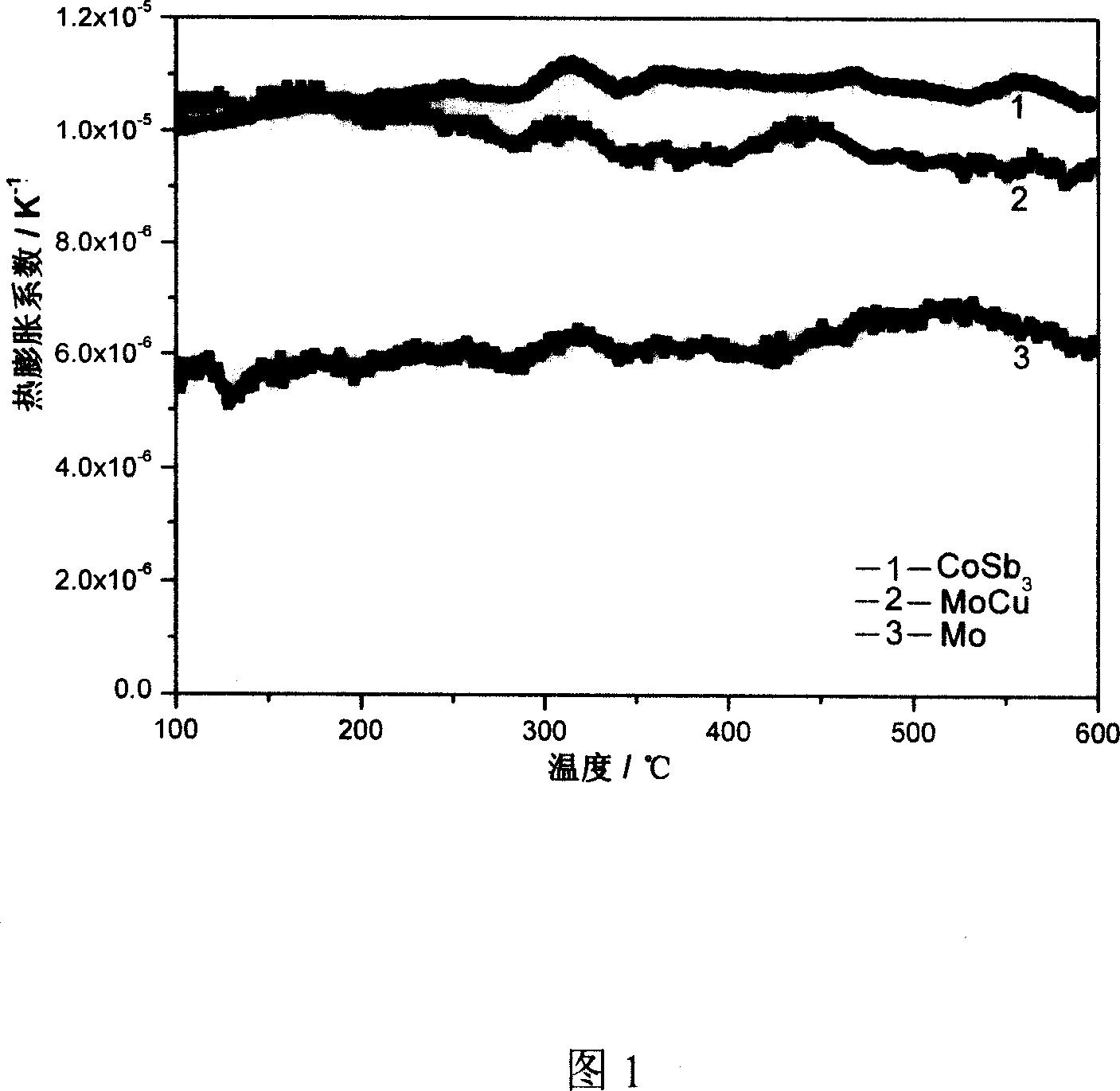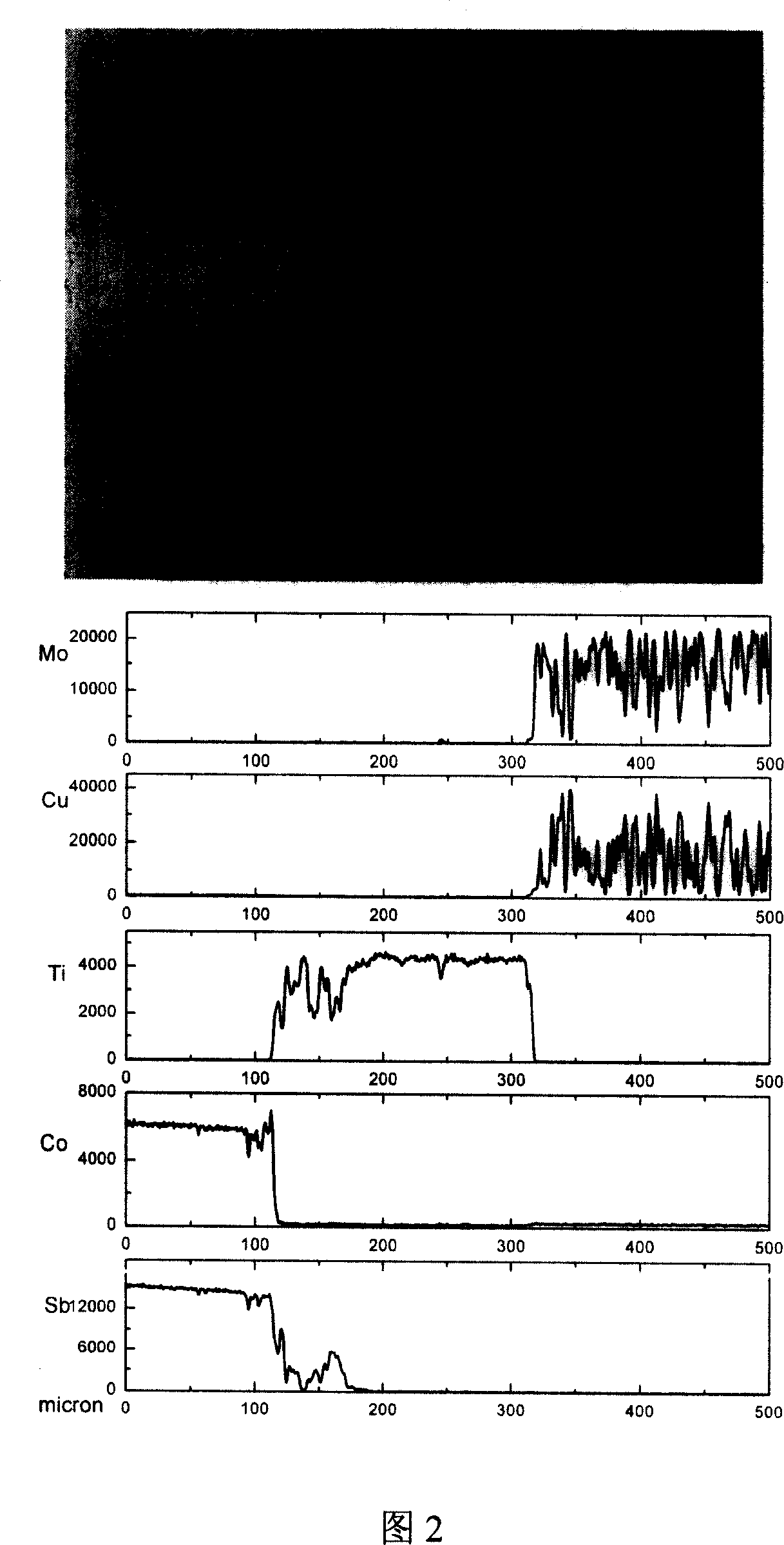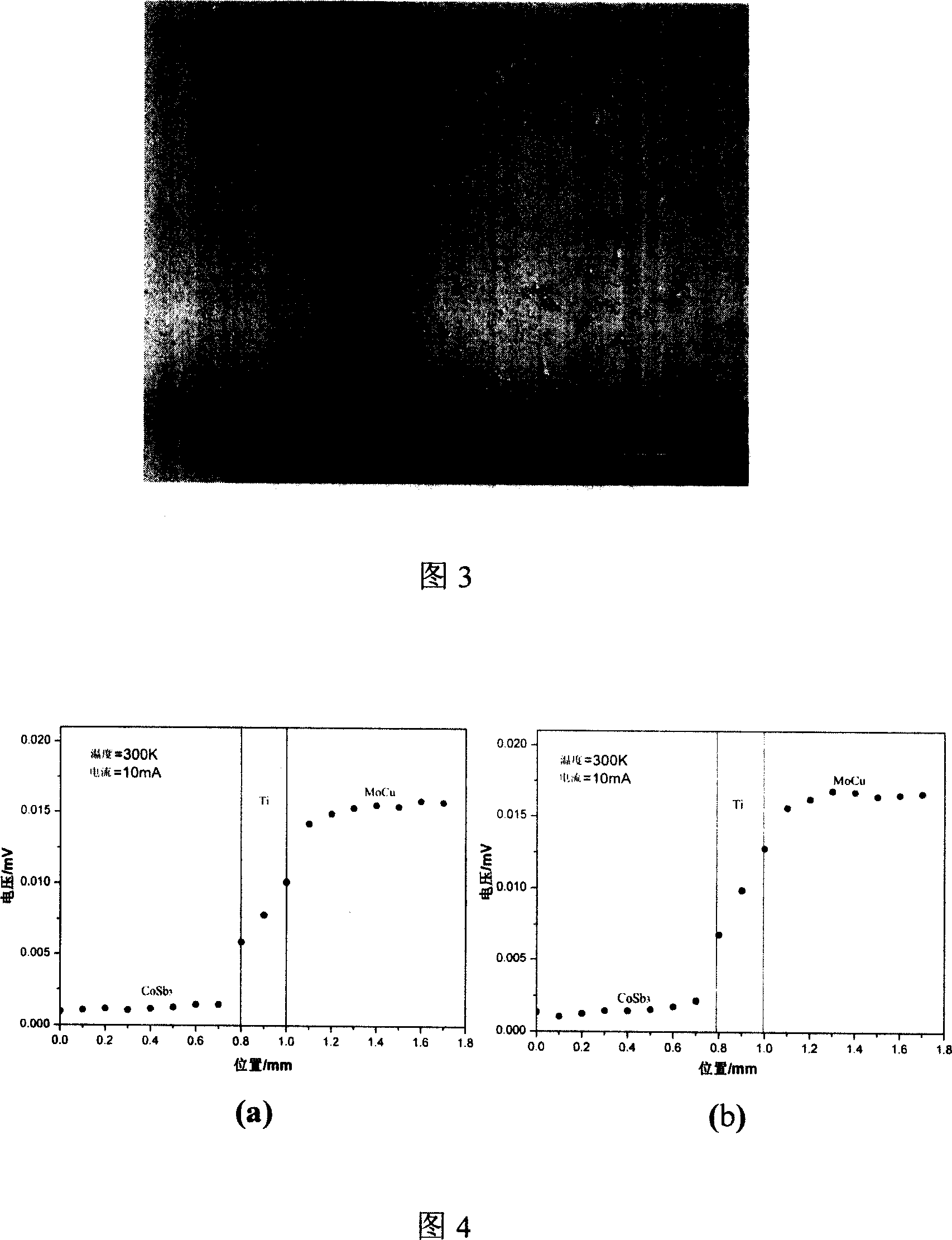Alloy electrod matched with cobalt antimonide thermoelectric component and one-step process connecting technology
A technology of alloy electrodes and thermoelectric elements, which is applied in the manufacture/processing of thermoelectric devices, thermoelectric device parts, thermoelectric device junction lead-out materials, etc., which can solve the problems of high energy consumption, poor oxidation resistance, electrical conductivity and thermal conductivity advanced questions
- Summary
- Abstract
- Description
- Claims
- Application Information
AI Technical Summary
Problems solved by technology
Method used
Image
Examples
Embodiment 1
[0015] The thickness of the molybdenum-copper electrode is 0.5mm. The surface is first sandblasted in a box-type sandblasting machine for 2 minutes, and then ultrasonically treated for 7 minutes. The molybdenum-copper electrode is placed in a Φ10 graphite mold, and the surface of the electrode is uniformly covered with a particle size of 500 mesh. Titanium powder, followed by uniform pre-pressing of cobalt antimonide thermoelectric materials, pre-pressing pressure 10MPa, and then SPS sintering, vacuum degree 1Pa, sintering pressure 30 MPa, heating rate 80 ℃ / min, sintering temperature 520 ℃, and then Keep warm for 10 minutes, and the sintering is completed.
[0016] The resulting Mo-Cu electrode / CoSb 3 No cracks were found in the block after scanning electron microscopy (see Figure 2). Electron probe analysis showed that there was no obvious interfacial diffusion at the interface between the cobalt antimonide-based thermoelectric material and the electrode. The phenomenon of...
Embodiment 2
[0018] The thickness of the molybdenum-copper electrode is 1mm. The surface is first sandblasted in a box-type sandblasting machine for 2 minutes, and then ultrasonically treated for 10 minutes. The molybdenum-copper electrode is placed in a Φ10 graphite mold, and the particle size of 75μm is evenly spread on the surface of the electrode. Titanium powder, and then evenly pre-press the cobalt antimonide thermoelectric material, the pre-press pressure is 10MPa, and then carry out SPS sintering, the vacuum degree is 7Pa, the sintering pressure is 50MPa, the heating rate is 120℃ / min, and the sintering temperature is 560℃, and then Keep warm for 20min.
[0019] The resulting Mo-Cu electrode / CoSb 3 No cracks were found in the block after scanning electron microscope observation. Electron probe analysis showed that there was no obvious interfacial diffusion between the cobalt antimonide-based thermoelectric material and the electrode interface. After 500 hours of 500°C thermal fatigu...
Embodiment 3
[0021]The thickness of the molybdenum-copper electrode is 3mm. The surface is first sandblasted in a box-type sandblasting machine for 2 minutes, and then ultrasonically treated for 10 minutes. The molybdenum-copper electrode is placed in a Φ10 graphite mold, and the surface of the electrode is uniformly covered with titanium with a particle size of 30 μm. powder, and then evenly pre-press the cobalt antimonide thermoelectric material, the pre-press pressure is 10MPa, and then carry out SPS sintering, the vacuum degree is 15Pa, the sintering pressure is 60MPa, the heating rate is 150°C / min, the sintering temperature is 600°C, and then heat preservation for 40min .
[0022] The resulting Mo-Cu electrode / CoSb 3 No cracks were found in the block after scanning electron microscope observation, and there was no obvious interface diffusion between the cobalt antimonide-based thermoelectric material and the electrode interface by electron probe analysis. After 500 hours of 500°C ther...
PUM
| Property | Measurement | Unit |
|---|---|---|
| particle diameter | aaaaa | aaaaa |
| thickness | aaaaa | aaaaa |
| thickness | aaaaa | aaaaa |
Abstract
Description
Claims
Application Information
 Login to View More
Login to View More - R&D
- Intellectual Property
- Life Sciences
- Materials
- Tech Scout
- Unparalleled Data Quality
- Higher Quality Content
- 60% Fewer Hallucinations
Browse by: Latest US Patents, China's latest patents, Technical Efficacy Thesaurus, Application Domain, Technology Topic, Popular Technical Reports.
© 2025 PatSnap. All rights reserved.Legal|Privacy policy|Modern Slavery Act Transparency Statement|Sitemap|About US| Contact US: help@patsnap.com



